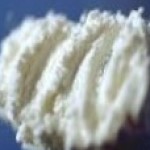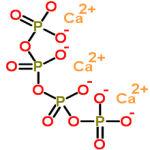CAS Number 12676-30-1, Calcium Sucrose Phosphate or CaSP GMP Food Grade Manufacturers Exporters







CAS Number 12676-30-1, Calcium Sucrose Phosphate or CaSP Manufacturer Exporter
For Properties Specifications of Calcium Sucrose Phosphate or CaSP Click Properties, Specifications of Calcium Sucrose Phosphate or CaSP Manufacturer.
For Uses of Calcium Sucrose Phosphate or CaSP Click Uses of Calcium Sucrose Phosphate or CaSP Manufacturer.
For For SDS MSDS Sheet of Calcium Sucrose Phosphate or CaSP Click SDS Safety Data Sheet MSDS Sheet of Calcium Sucrose Phosphate or CaSP Manufacturer.
The Properties and Specifications of Calcium Sucrose Phosphate or CaSP:
Specifications of Calcium Sucrose Phosphate or CaSP:
Appearance: White Powder.
pH(1% aqueous Solution): 7 to 9
Assay(Calcium Content): 10% to 12%
Total Bacterial Count: Not more than 1000 CFU/g.
Yeast & Mould: Not more than 100 CFU/g.
E. coli: Absent.
Salmonella: Absent.
P. aeruginosa: Absent.
S. aureus: Absent.
The Uses of Calcium Sucrose Phosphate or CaSP:
Calcium sucrose phosphate (CaSP) is used as a remineralizing agent with cariostatic action, which is commonly available in the form of tooth cream.
The MSDS-SDS Hazard Statement of Calcium Sucrose Phosphate or CaSP:
Calcium Sucrose Phosphate SDS GHS, Safety Data Sheet
MSDS Sheet, Material Safety Data Sheet
1. Product Identification
Product Name & Other Names: Calcium Sucrose Phosphate.
Synonyms: alpha-D-Glucopyranoside, beta-D-fructofuranosyl, phosphate, calcium salt; Calcium hydrogen phosphate--hex-2-ulofuranosyl hexopyranoside (1/1/1)
CAS No.: 12676-30-1
EINECS EC Number: NA
Chemical Formula: C12H23CaO15P or so.
Molecular Weight: 478.35
Relevant uses and uses advised against (if any): Laboratory and Industrial Manufacturing Use.
2. Hazards Identification
GHS, Globally Harmonized System Classification in accordance with 29 CFR 1910
Classification according to Regulation (EC) No 1272/2008
Not a hazardous substance or mixture according to Regulation (EC) No. 1272/2008.
This substance is not classified as dangerous according to Directive 67/548/EEC.
Labeling according to GHS & Regulation (EC) No 1272/2008
GHS Label Elements NONE |
Signal Words: None
Precautionary statements:
P261: Avoid breathing dust/fume/gas/mist/vapors/spray.
P262: Do not get in eyes, on skin, or on clothing.
P281: Use personal protective equipment as required.
P303+P361+P353: IF ON SKIN (or hair): Remove/Take off immediately all contaminated clothing. Rinse skin with water/shower.
P304+P340: IF INHALED: Remove victim to fresh air and keep at rest in a position comfortable for breathing.
P305+P351+P338: IF IN EYES: Rinse cautiously with water for several minutes. Remove contact lenses, if present and easy to do. Continue rinsing.
3. Composition/Information on Ingredients
Product Name & Other Names: Calcium Sucrose Phosphate.
Synonyms: alpha-D-Glucopyranoside, beta-D-fructofuranosyl, phosphate, calcium salt; Calcium hydrogen phosphate--hex-2-ulofuranosyl hexopyranoside (1/1/1)
CAS No.: 12676-30-1
EINECS EC Number: NA
4. First Aid Measures
Always seek medical advice after the first aid treatment.
Inhalation: If Dibasic Calcium Phosphate inhaled, remove to fresh air. If not breathing, give artificial respiration. If breathing is difficult, give oxygen. Get medical attention.
Ingestion: Not expected to require first aid measures. If large amounts were swallowed, give water to drink and get medical advice.
Skin Contact: Not expected to require first aid measures. Wash exposed area with soap and water. Get medical advice if irritation develops.
Eye Contact: Check for and remove any contact lenses. In case of contact, immediately flush eyes with plenty of water for at least 15 minutes. Get medical attention if irritation occurs.
5. Fire Fighting Measures
Fire: Not considered to be a fire hazard.
Fire Extinguishing Media: Use any means suitable for extinguishing surrounding fire.
Extinguishing Media Not recommended: Avoid using solid water jet as it may scatter the fire.
Special Information: In the event of a fire, wear full protective clothing and NIOSH-approved self-contained breathing apparatus with full face piece operated in the pressure demand or other positive pressure mode. At high temperatures under fire conditions, it may produce toxic or irritating fumes. Fire-extinguishing work is done from the windward and the suitable fire-extinguishing method according to the surrounding situation is used.
6. Accidental Release Measures
Personal precautions, protective equipment, and emergency procedures: Ventilate area of leak or spill. Avoid breathing dust/fumes/gas/mist/vapors/spray. Use individual protective equipment (waterproof boots, suitable protective clothing, safety glasses, etc.). Do not approach facing the wind.
Environmental precautions: Do not let the product enter drains, soil, or water sources.
Methods and materials used for containment cleanup procedures and Storage: Contain spilled material. Cover with an inert, non-combustible absorbent material, (e.g., sand, earth, diatomaceous earth, vermiculite). Vacuum or sweep-up and remove to an approved disposal container. Finish cleaning by spreading water on the contaminated surface and allow to evacuate as per law.
7. Handling and Storage
Precautions for safe handling: Apply according to good manufacturing and industrial hygiene practices. Ensure proper ventilation. In case of insufficient ventilation, wear suitable respiratory equipment. Wash thoroughly after handling. Do not drink, eat, or smoke while handling. Avoid contact with skin, eyes, and clothing. Minimize dust generation. Avoid breathing dust/fumes/gas/mist/vapors/spray. Keep container tightly closed. Avoid ingestion and inhalation. Use individual protective equipment (waterproof boots, suitable protective clothing, safety glasses, etc.).
Conditions for safe storage, including any incompatibilities: Store in cool, dry, and ventilated area away from heat sources and protected from sunlight in tightly closed original container. Keep air contact to a minimum. Store protected from heat, sparks and ignition sources and incompatible materials. Avoid contact with skin and eyes. Avoid inhalation of dust/mist/vapor. Do not store with incompatible materials.
8. Exposure Controls/Personal Protection
Airborne Exposure Limits: None established.
Ventilation System: A system of local and/or general exhaust is recommended to keep employee exposures as low as possible.
Personal Respirators (NIOSH Approved): For conditions of use where exposure to dust or mist is apparent and engineering controls are not feasible, a particulate respirator (NIOSH type N95 or better filters) may be worn.
Skin Protection: Wear protective gloves and clean body-covering clothing.
Eye Protection: Use chemical safety goggles. Maintain eye wash fountain and quick-drench facilities in work area.
Other Control Measures: Maintain good housekeeping in work area. Handle in accordance with good industrial hygiene and safety practice.
9. Physical and Chemical Properties
Appearance: White powder.
Odor: Odorless.
Odor threshold: Not available.
pH: 7 to 9 in 1% solution.
Relative density: Not available.
Boiling Point: Decomposes.
Melting Point: Decomposes.
Flash point: Not available.
Auto-ignition temperature: Not available.
Decomposition temperature: Not available.
Upper/lower flammability or explosive limits: Not available.
Vapor pressure: Not available.
Vapor density: Not available.
Evaporation rate: Not available.
Flammability (solid, gas): Not available.
Partition coefficient: n-octanol/water: Not available.
Solubility: Not available.
Viscosity: Not available.
10. Stability and Reactivity
Stability: Stable under ordinary conditions of use and storage.
Hazardous Decomposition Products: No information found.
Hazardous Polymerization: Will not occur.
Incompatibilities: No incompatibility data found.
Conditions to Avoid: Excessive dust generation.
11. Toxicological Information
Oral rat LD50: No information found.
Carcinogenicity: No component of this product present at levels greater than or equal to 0.1% is identified as probable, possible, or confirmed human carcinogen by IARC, ACGIH, OSHA and NTP.
Mutagenic Effects: Not available.
Developmental Toxicity: Not available.
12. Ecological Information
Environmental Toxicity: Not much found.
LC50 – Daphnia magna (Water flea) - >1,000 mg/l – 96 hours.
Persistence and Degradability: No information available.
Mobility: No information available.
Bioaccumulation/ Accumulation: No information available.
Results of PBT and vPvB assessment: No data available for assessment.
13. Disposal Considerations
Whatever cannot be saved for recovery or recycling should be managed in an appropriate and approved waste disposal facility.
14. Transport Information
DOT USA, TDG Canada & ADR/RID Europe: Not controlled.
IMDG/IMO & IATA/ICAO: Not controlled.
15. Regulatory Information
USA:
SARA 311/312: See section 2.
California Proposition 65: Not Listed.
Section 16 - Additional Information
Disclaimer:
**************************
Our company provides this MSDS sheet in good faith but makes no representation as to its comprehensiveness or accuracy. This SDS sheet is intended only as a guide to the appropriate precautionary handling of the material by a properly trained person using this product. The above information has been compiled from various sources and has the possibility of discrepancy and being out-dated information. Individuals receiving the information must exercise their independent judgment and do further search in determining its appropriateness for a particular purpose. In no case shall our company be liable to loss or damages by the product user.
**************************
Anmol Chemicals & Pharmaceuticals Pvt. Ltd. is an off-shoot of Anmol Chemicals Taloja. It is located in MIDC Taloja and it is manufacturing pharmaceutical grades of API, Excepients, Food grade and Reagent grade chemicals. Anmol Chemicals & Pharmaceuticals Pvt. Ltd. is a several decades old group of companies, engaged in manufacturing, supplying, distributing, wholesale supplies for actual users, retail or small pack supplies for research and development chemicals, fine and speciality chemicals, pharmaceutical excipients, mineral fortifiers in chemically pure, Analytical reagent grade, IP BP USP Ph Eur EP JP and other pharmaceutical grade monograph including FCC Food grade chemicals and Nutraceuticals, Mineral Fortifiers at best prices.

Calcium Sucrose Phosphate or CaSP Structure
CAS Number 12676-30-1, Calcium Sucrose Phosphate or CaSP Manufacturer Exporter
ANMOL CHEMICALS & PHARMACEUTICALS Pvt. Ltd.
India, USA, Europe, UAE
TELEPHONE: +912223770100
Navi Mumbai, INDIA
e-mail: info(At the rate i.e. @)anmol.org
Copyright. 16-nov-24
We manufacture:
Glacial Acetic Acid Manufacturer

